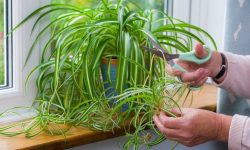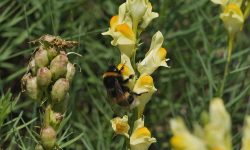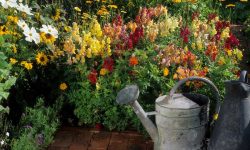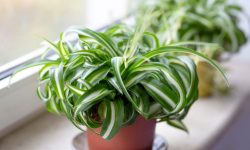Begonias are cherished for their vibrant colors, elegant foliage, and long-lasting blooms. Knowing how long begonias bloom helps gardeners plan their gardens and enjoy continuous color throughout the season. Bloom duration varies depending on begonia type, care practices, and environmental conditions. Some varieties flower from early summer to fall, while others can bloom almost year-round in favorable climates. Understanding the factors influencing bloom longevity allows gardeners to maximize their flowering potential and maintain healthy, attractive plants.
Proper care extends the blooming period and encourages strong growth. Watering, fertilization, pruning, and light management all play a crucial role in supporting consistent flowering. Choosing the right variety for your climate and providing optimal growing conditions ensures that begonias produce abundant flowers over time. By following expert tips, gardeners can enhance bloom duration, prevent premature fading, and enjoy a visually stunning display of color. This guide will cover essential strategies to help begonias thrive and maintain maximum flowering throughout their growing season.
Choosing the Right Begonia Varieties for Extended Bloom
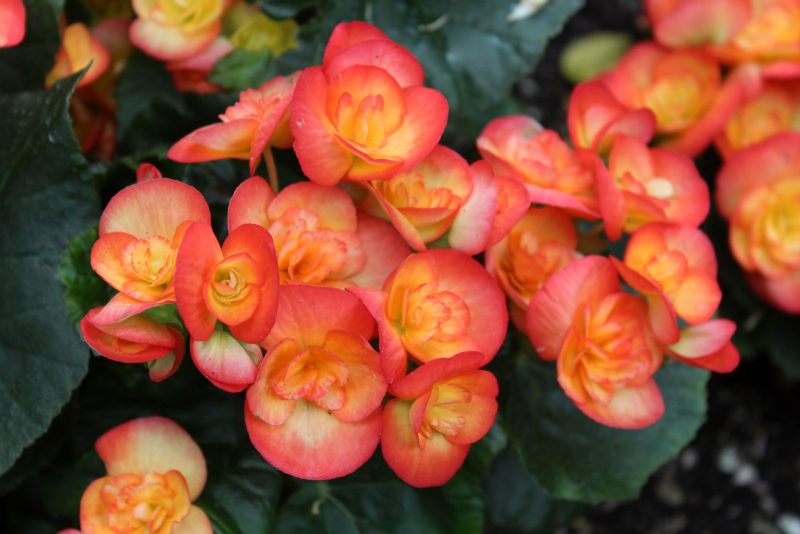
Selecting the appropriate begonia variety plays a critical role in determining bloom duration and overall garden appeal. Tuberous begonias are renowned for producing large, vibrant flowers that can last for weeks during summer. Cane begonias provide sturdy stems and continuous flowering, making them ideal for long-lasting displays in containers or garden beds. Rhizomatous and wax begonias offer lush foliage along with repeated blooms, which can extend visual interest throughout the growing season. Knowing the specific flowering characteristics of each variety helps gardeners plan for a garden that remains colorful and lively for longer periods.
Environmental adaptability is another important consideration. Some begonia varieties thrive in bright, indirect light, while others perform better in partial shade. Climate tolerance, including heat or humidity resistance, affects how long a plant can sustain blooms. Choosing varieties suited to local conditions ensures optimal growth, reduces plant stress, and supports extended flowering. Gardeners should also consider bloom size, color, and form to create harmonious garden designs. Selecting complementary varieties can stagger flowering times, providing a continuous display from early summer through autumn.
Proper placement and care further maximize bloom potential. Position begonias in areas with appropriate light, temperature, and airflow. Use high-quality soil or containers with excellent drainage to prevent root problems. Consistent maintenance, including deadheading spent flowers, light pruning, and regular fertilization, supports healthy growth and prolonged blooming. Combining thoughtful variety selection with attentive care allows begonias to deliver sustained floral displays. Gardeners can enjoy vibrant, long-lasting flowers that enhance both indoor and outdoor spaces, ensuring a visually striking and resilient garden season after season.
Factors Affecting How Long Begonias Bloom
Variety and Genetics
The type of begonia you plant plays a significant role in bloom duration. Some varieties, such as tuberous begonias, produce large, showy flowers for a limited summer period, while wax and fibrous-rooted types can bloom almost continuously with proper care. Genetics determine flowering habits, color intensity, and the plant’s resilience to environmental stress. Choosing the right variety suited to your local climate ensures optimal bloom longevity and consistent color display. Furthermore, some hybrids have been selectively bred for extended flowering, disease resistance, or compact growth. Understanding these traits helps gardeners select the best plants for their garden style and seasonal goals.
Understanding the growth habits of each variety helps gardeners plan maintenance schedules. Tubers may require dormancy periods, while fibrous-rooted types need regular deadheading to encourage new blooms. Selecting cultivars known for extended flowering allows gardeners to enjoy vibrant begonias throughout the season. Combining variety selection with proper care practices ensures plants reach their full blooming potential, providing a visually stunning and long-lasting garden display. Paying attention to both genetics and horticultural practices maximizes the joy of watching begonias flower beautifully from early summer to late fall.
Environmental Conditions
Temperature, light, humidity, and soil quality significantly impact how long begonias bloom. Ideal temperatures range between 65°F and 75°F, while extremes can stress the plant, reducing flowering duration. Begonias thrive in bright, indirect light, and exposure to direct, intense sunlight may scorch foliage and shorten bloom life. Soil must be well-draining and nutrient-rich to support strong growth. Additionally, microclimates in gardens can affect plant performance, so choosing the best location is critical.
Humidity and airflow also influence bloom longevity. High humidity promotes lush foliage but can increase fungal risk, whereas poor airflow encourages disease. Consistent watering, mulching, and fertilization help maintain optimal soil conditions. Controlling environmental factors prevents stress, extends flowering periods, and ensures continuous colorful blooms in both indoor and outdoor settings. Regular observation and minor adjustments, such as moving containers or shading plants during heat waves, help maintain ideal conditions for peak flowering.
Watering and Soil Requirements for Extended Bloom
Proper Watering Techniques
Consistent watering is crucial for maximizing begonia bloom duration. Begonias prefer evenly moist soil, not soggy conditions. Overwatering can cause root rot, while underwatering stresses the plant and reduces flower production. The soil should feel slightly damp to the touch. Deep, infrequent watering encourages strong root development, which supports continuous flowering. For container-grown begonias, ensure proper drainage to prevent water accumulation at the bottom of pots, which can harm roots. Additionally, using a drip irrigation system or self-watering containers can help maintain consistent moisture levels.
Monitoring moisture levels helps prevent common watering mistakes. Use mulch to retain soil moisture and regulate temperature around the roots. Water at the base of the plant rather than overhead to avoid wetting foliage, which can promote fungal diseases. Adjust watering frequency based on environmental conditions, increasing during hot, dry periods and reducing during cooler, humid conditions. Observing leaf turgidity and soil texture helps determine the plant’s water needs. Proper watering practices directly affect plant vigor, health, and bloom longevity, allowing begonias to display colorful flowers consistently throughout their growing season.
Soil Composition and Fertility
Soil quality directly influences how long begonias bloom. Begonias thrive in well-draining, fertile soils rich in organic matter. A mix of peat, compost, and perlite creates a loose, aerated medium that retains moisture while allowing excess water to escape. Nutrient-rich soil supports strong stem and leaf development, which is essential for producing abundant blooms. Regularly replenishing organic matter helps maintain fertility and soil structure. Testing soil pH periodically ensures optimal nutrient availability, as begonias prefer slightly acidic to neutral conditions.
Fertilization complements healthy soil by providing essential nutrients. Use a balanced, water-soluble fertilizer every two to four weeks during active growth to promote flowering. Avoid excessive nitrogen, which encourages leafy growth at the expense of blooms. Incorporating slow-release fertilizers into the soil can provide consistent nutrients over time. Proper soil management, combined with correct watering, creates ideal conditions for continuous flowering. By maintaining fertile, well-draining soil, gardeners ensure their begonias remain robust, vibrant, and capable of producing colorful flowers for an extended period.
Light and Temperature Requirements for Maximum Bloom
Optimal Light Conditions
Light plays a vital role in how long begonias bloom. Most begonias thrive in bright, indirect sunlight. Too much direct sunlight can scorch leaves, fade flower colors, and shorten flowering periods, while insufficient light reduces bloom production and causes leggy growth. Position container-grown begonias near east or north-facing windows for gentle morning light, or provide filtered sunlight outdoors using shade cloth. Regularly rotating pots ensures even exposure, promoting uniform flowering across the plant. Selecting the right location and monitoring light intensity supports consistent blooms and vibrant foliage throughout the season.
Monitoring light levels helps gardeners adjust conditions to extend bloom duration. For indoor begonias, supplementing with grow lights during shorter days maintains continuous flowering. Outdoor plants benefit from partial shade during the hottest hours to prevent stress and heat damage. Consistent, optimal light enhances photosynthesis, supporting strong stems and abundant flowers. Observing plants for signs of light stress, such as leaf yellowing or sparse blooms, allows timely adjustments. By understanding light requirements and adapting exposure, gardeners can significantly prolong the flowering period of their begonias, ensuring visually stunning plants and continuous color display throughout the growing season.
Ideal Temperature Ranges
Temperature also affects begonia flowering. Most varieties perform best in temperatures between 65°F and 75°F. Prolonged exposure to temperatures above 85°F can cause heat stress, wilting, and reduced blooms, while cold temperatures below 55°F can stunt growth and delay flowering. Container-grown begonias can be moved indoors or to protected areas during extreme temperatures to maintain consistent growth. Understanding the thermal tolerance of each variety helps gardeners prevent stress and prolong bloom periods.
Nighttime temperatures are equally important, as cooler nights help preserve flower longevity and promote healthy metabolism. Avoid placing plants near drafts, heating vents, or air conditioning units, which cause sudden fluctuations. Maintaining stable, moderate temperatures encourages steady growth, robust foliage, and extended flowering. By monitoring and adjusting the environment, gardeners can create ideal conditions that support continuous blooms and vibrant plants. Proper temperature management ensures begonias remain resilient, healthy, and capable of producing abundant flowers for an extended period throughout their growing season.
Fertilization Strategies to Promote Long Blooming
Proper fertilization is essential for maximizing begonia bloom duration. Nutrient-rich soil supports strong stems, healthy leaves, and vibrant flowers. Begonias benefit from a balanced fertilizer containing nitrogen, phosphorus, and potassium. Nitrogen promotes foliage growth, phosphorus encourages flowering, and potassium strengthens overall plant health. Applying fertilizer regularly during the active growing season ensures consistent blooms. Slow-release fertilizers can provide a steady supply of nutrients over time, reducing the risk of nutrient deficiencies and promoting sustained flowering.
Timing and method of application also influence bloom longevity. Water-soluble fertilizers can be applied every two to four weeks to quickly supply nutrients directly to roots. Avoid over-fertilization, as excessive nitrogen can lead to leafy growth with fewer flowers. Organic fertilizers, such as compost tea or fish emulsion, provide nutrients while improving soil structure and supporting beneficial microorganisms. Incorporating these practices maintains soil fertility and supports healthy, continuous flowering.
In addition to general fertilization, monitoring plant health is critical. Observing leaf color, flower production, and overall growth helps determine nutrient needs. Adjusting fertilizer type or frequency according to plant performance ensures begonias continue blooming abundantly. Combined with proper watering, light management, and pruning, a consistent fertilization strategy enhances vigor and prolongs flowering. Following these techniques allows gardeners to enjoy lush, colorful begonias with long-lasting blooms, creating a visually striking and vibrant garden display throughout the season.
Pruning and Deadheading for Maximum Flower Production
Light Pruning Techniques
Light pruning encourages begonia plants to produce more blooms and maintain a compact, attractive shape. Removing damaged, diseased, or weak stems allows the plant to focus energy on healthy growth. Regular pruning promotes airflow between branches, reducing the risk of fungal infections and pest infestations. Light pruning should be done during the growing season to stimulate new shoots and prevent the plant from becoming leggy. Additionally, cutting back the tips of older stems encourages branching, which creates more flowering sites and enhances overall plant density.
Begonias respond well to selective pruning, where only the top portions of stems are trimmed. Always use clean, sharp scissors or pruning shears to prevent tissue damage and disease spread. Light pruning also helps maintain uniform plant height and shape, ensuring an aesthetically pleasing display. This approach promotes vigorous flowering and extends the overall bloom period for both indoor and outdoor begonias. Consistent pruning, combined with proper watering and fertilization, strengthens plants, encourages healthy foliage, and results in a more vibrant, long-lasting flower display throughout the growing season.
Deadheading for Continuous Blooms
Deadheading, or removing spent flowers, is essential to maximize blooming. Faded blooms divert energy from producing new flowers, shortening the overall flowering period. By pinching or cutting off spent flowers at the base of the stem, the plant redirects nutrients to developing buds, encouraging a continuous display of blooms. Regular deadheading also improves plant appearance and prevents seed formation, which can slow flower production and reduce plant vigor.
The process is simple but highly effective. Inspect the plant weekly and remove all faded flowers promptly. Deadheading combined with proper watering, fertilization, pruning, and light management ensures that begonias remain healthy, vibrant, and capable of producing abundant blooms. Over time, consistent deadheading significantly extends the flowering period, enhances garden aesthetics, and provides a long-lasting, colorful display throughout the growing season. Proper deadheading techniques maintain plant health and maximize bloom potential for all types of begonias.
Pest and Disease Management to Protect Flowers
Common Pests and How to Manage Them
Begonias are susceptible to a variety of pests, including aphids, spider mites, thrips, and mealybugs. These insects feed on plant sap, weakening stems and leaves, which reduces flower production and overall plant vigor. Early detection is crucial to prevent severe infestations. Regularly inspect leaves, stems, and flower buds for signs of pests, such as discoloration, sticky residue, tiny webs, or distorted growth. Manual removal using a soft cloth, gentle water spray, or pruning of heavily infested areas can control minor infestations without harming the plant.
For larger infestations, insecticidal soaps or neem oil are effective solutions. Apply treatments according to the product label, ensuring thorough coverage on all plant surfaces, including undersides of leaves. Maintaining healthy begonias through proper watering, fertilization, and optimal light conditions reduces susceptibility to pests. Additionally, introducing beneficial insects, such as ladybugs or predatory mites, can naturally control pest populations. Consistent monitoring, timely intervention, and preventive measures help protect begonias, ensuring they remain healthy and capable of producing abundant blooms throughout the growing season.
Common Diseases and Prevention
Begonias are prone to fungal and bacterial diseases, including powdery mildew, botrytis blight, and root rot. These diseases can damage foliage, weaken stems, and significantly reduce flower longevity. Proper cultural practices are essential for prevention. Ensure adequate spacing between plants to promote airflow, avoid overhead watering that wets foliage, and remove any dead or decaying plant material promptly. Using well-draining soil and maintaining container hygiene minimizes the risk of root infections and disease spread.
If disease occurs, promptly remove affected leaves and stems to prevent contamination of healthy tissue. Fungicides or bactericides may be applied for severe infections, strictly following label instructions. Regular observation and early intervention are key to maintaining plant health and continuous blooming. Combining preventive strategies with timely treatment supports robust growth, vibrant foliage, and extended flowering. Effective pest and disease management ensures begonias remain visually appealing, resilient, and capable of producing long-lasting, colorful flowers season after season.
Overwintering Begonias to Preserve Flowering Potential
Overwintering begonias is essential for maintaining their flowering potential year after year. Tender begonias, especially tuberous and cane types, are sensitive to frost and cold temperatures. Before the first frost, carefully dig up tuberous begonias or move potted plants indoors. Clean the plants by removing dead leaves and flowers to reduce the risk of pests or diseases during storage. Preparing plants properly ensures they survive winter dormancy and are ready for vigorous growth in the next season.
The storage environment plays a critical role in overwintering success. Tubers should be stored in a cool, dark place with temperatures between 50°F and 60°F. Use dry peat moss, vermiculite, or shredded newspaper to cover the tubers, keeping them slightly moist but not wet. Container-grown begonias should be placed in bright, indirect light and watered sparingly to prevent desiccation. Maintaining stable environmental conditions prevents rot and encourages healthy resumption of growth when temperatures rise.
Proper care during winter directly affects spring bloom performance. Once temperatures consistently rise, tubers can be replanted, and indoor begonias can be gradually acclimated to outdoor conditions. Fertilizing, pruning, and adjusting light exposure during early growth supports abundant flowering. By following these overwintering practices, gardeners can extend the life of their begonias, maintain plant health, and ensure a long-lasting, vibrant display of flowers each season. Consistent overwintering ensures that begonias remain resilient and capable of producing continuous blooms for years.
Troubleshooting Common Blooming Problems
Insufficient Flowering
One common problem is insufficient flowering, often caused by improper light, poor nutrition, or incorrect pruning. Begonias need bright, indirect light to produce abundant blooms. Low light levels can lead to fewer or no flowers, while excessive shade encourages leafy growth without blooms. Nutrient deficiencies, particularly low phosphorus, reduce the plant’s energy for flower production. Using a balanced fertilizer with higher phosphorus content supports healthy flowering and bud formation.
Pruning practices also influence blooming. Cutting back too aggressively or at the wrong time can remove developing flower buds and reduce overall flower display. Light pruning combined with regular deadheading encourages continuous blooms. Gardeners should also monitor temperature and humidity, as environmental stress can limit flower production. By carefully adjusting light exposure, fertilization, and pruning techniques, begonias can reach their full blooming potential. Consistent observation and timely care ensure healthy, vibrant flowers throughout the growing season.
Yellowing Leaves
Yellowing leaves are a frequent indicator of blooming problems. Overwatering, poor drainage, and nutrient imbalances are common causes. Waterlogged soil suffocates roots, while prolonged dry conditions stress the plant. Excess nitrogen can encourage leafy growth at the expense of flowers. Proper watering practices, well-draining soil, and balanced fertilization are essential for restoring leaf and flower health.
In addition to adjusting water and nutrients, monitoring environmental factors helps prevent leaf yellowing. Ensuring adequate light, removing dead leaves, and maintaining appropriate temperature and humidity levels supports healthy foliage. Strong, green leaves are essential for photosynthesis, which fuels flower production. Correcting these issues not only restores plant vigor but also prolongs flowering, allowing begonias to maintain abundant, long-lasting blooms. Healthy leaves ensure the plant has sufficient energy for robust and continuous flowering.
Pest and Disease Interference
Pests and diseases directly affect bloom quality and quantity. Aphids, spider mites, mealybugs, and fungal infections damage leaves and stems, diverting resources from flower development. Early detection and prompt management prevent severe impacts on flowering. Inspecting plants regularly and using targeted treatments such as insecticidal soaps, neem oil, or fungicides protects the plant’s flowering potential.
Preventive care is key for long-term health. Proper plant spacing, good airflow, and avoiding overwatering reduce disease risk. Removing affected leaves or stems and maintaining hygiene in containers and soil also prevents spread. Healthy, vigorous plants are less susceptible to pests and more capable of producing continuous blooms. Combining prevention with timely treatment ensures begonias remain robust, attractive, and able to deliver abundant, long-lasting flowers throughout the growing season, creating a vibrant and thriving garden display.
FAQ About How Long Begonias Bloom
How long do begonias typically bloom?
Begonias can bloom for several weeks to months, depending on variety, care, and environmental conditions. Tuberous and cane begonias often provide the longest bloom periods. Consistent light, proper watering, fertilization, and regular pruning extend flowering, allowing gardeners to enjoy vibrant colors throughout the growing season.
What is the best time to prune begonias for more flowers?
Prune begonias during the growing season, ideally in spring and early summer, to encourage branching and bud formation. Avoid heavy cuts in late autumn or winter, as this may remove flower buds. Light pruning and removing damaged stems promote healthy growth and maximize bloom production over an extended period.
How does fertilization affect begonia blooms?
Fertilization provides essential nutrients for strong growth and abundant flowering. Using a balanced fertilizer with slightly higher phosphorus content encourages bud development and continuous blooms. Over-fertilization with nitrogen can promote leafy growth at the expense of flowers, so careful application is necessary for optimal flowering.
Can environmental conditions change bloom duration?
Yes, light, temperature, and humidity significantly affect bloom longevity. Bright, indirect light supports continuous flowering, while extreme temperatures or inconsistent moisture can reduce flower duration. Maintaining stable growing conditions ensures healthy plants capable of producing long-lasting, vibrant blooms.
How can I prevent pests and diseases from reducing blooms?
Regular inspection and preventive care are key. Remove affected leaves, maintain airflow, avoid overwatering, and use targeted treatments like insecticidal soap or fungicides when necessary. Healthy, vigorous plants resist pests and diseases better, supporting sustained flowering and maintaining both plant health and visual appeal throughout the season.
Conclusion
Proper care and attention are essential for ensuring begonias bloom abundantly and consistently. By following techniques such as correct pruning, deadheading, fertilization, and pest management, gardeners can promote healthy growth and vibrant flowers. Environmental factors like light, temperature, and soil moisture also play a crucial role in bloom longevity. Monitoring plant health and addressing issues early helps maintain energy for continuous flowering. With consistent care and seasonal adjustments, begonias can provide long-lasting, colorful displays. Mastering these practices ensures a thriving garden filled with beautiful, resilient begonias every season.



